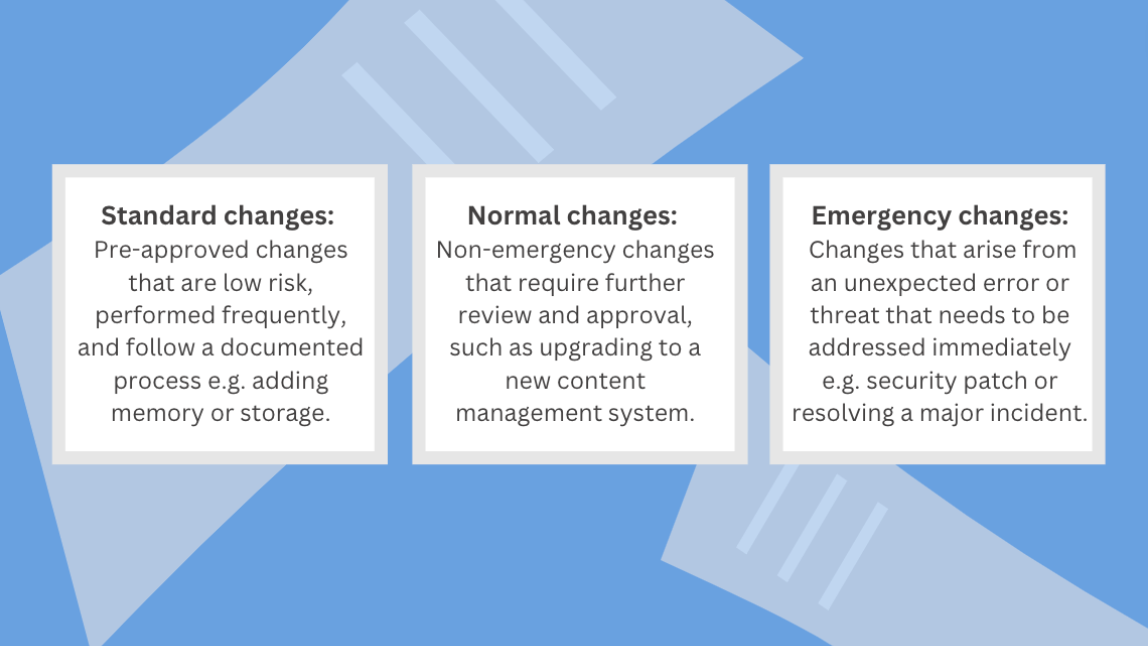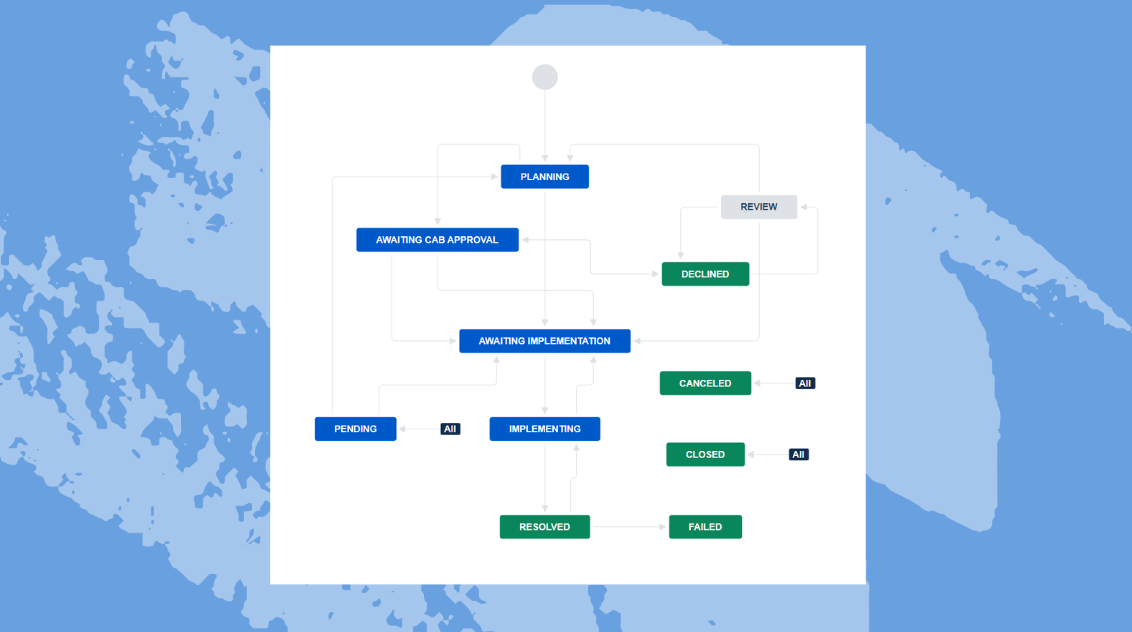Using Jira Service Management for Change Management

Wondering how your team can use Jira Service Management (JSM) to enhance their change management rituals? As a tool that encourages collaborative, intuitive and integrated processes, JSM looks to the future of change management processes. We have put together this helpful breakdown which examines the principles of change management and how JSM can be used as a tool to streamline your processes.
What is change management?
Change management, a service management practice essential to IT teams, can often be difficult to implement. At its core, change management refers to the process an organisation takes to adjust critical systems and services. This practice puts emphasis on minimising risks and disruptions to IT services, no matter the scale of such changes i.e introducing the implementation of a new tool across an organisation.
A common way to integrate this practice is through a change management workflow, this allows a team to outline their process and prevent potential roadblocks. Such workflows set out a company’s goals and give stakeholder’s an understanding of prospective transitions. This in turn allows the team to prepares an organisation as they move from the planning stages to a functional endpoint.

Introduction to Jira Service Management
With its built-in capabilities, JSM offers teams an intuitive service desk that prioritises risk assessment and approval routing. Software changes can be complicated in nature, and often hinge on both Agile and ITSM principles. Atlassian has aligned these two practices to provide teams with a fully-realised service management system fuelled by automation.
Through integrating JSM with CI/CD tools, such as Bitbucket, Atlassian has streamlined workflows in a way that considers change within a software environment. With this integration, teams can run software changes without the lengthy bureaucratic procedures often associated with change management. In addition to this, your organisation can use Confluence for cross-functional planning, allowing the relevant teams to collaborate and achieve a common goal.
How can you adopt change management into your Jira workflow?
Through JSM, teams can make use of a change management workflow template that ensures requests are recorded, assessed and approved on their journey. Wondering what initial steps to take before you’re ready to develop your own workflows? Atlassian outlines these basic steps for a change management process:
- Change request: a proposed change is requested, with the corresponding risk assessment, expected implementation and affected systems.
- Change request review: review completed by a change manager, decides on the likelihood of success and the risks involved.
- Change plan: the team outlines expected outcomes, resources, testing requirements in order to create a plan for the change.
- Change approval: the plan undergoes review, leading to a final decision.
- Change implementation: the team goes forward with the plan, documenting procedures and results along the way.
- Change closure: the change manager reviews the process and the results, communicating this with the change team.
While not all change management processes will follow this journey, it provides teams with a good starting point. JSM allows users to adapt the workflow to suit their particular needs whenever they arise.
What features does Jira Service Management have to offer?
In addition to having access to a workflow, teams can set up enforced approvals to ensure they miss no vital steps within the process. While any agent or admin has the ability to transition an issue through a review stage under the default settings, this can be adjusted. JSM gives you the option to enforce approvals, making it impossible to move an issue without it being reviewed by one or more specific team members. Furthermore, the built-in change calendar allows teams to schedule and view changes by day, week, or month. This creates a space where users can visualise the project in a different dimension, and plan for risks accordingly.

With its adaptable workflow and automations, Jira Service Management works with teams to build their change management process. If your team is interested in how JSM can help you, get in touch, our expert solutions team can talk you through any questions you may have.

Comments:
There are no comments for this entry yet.